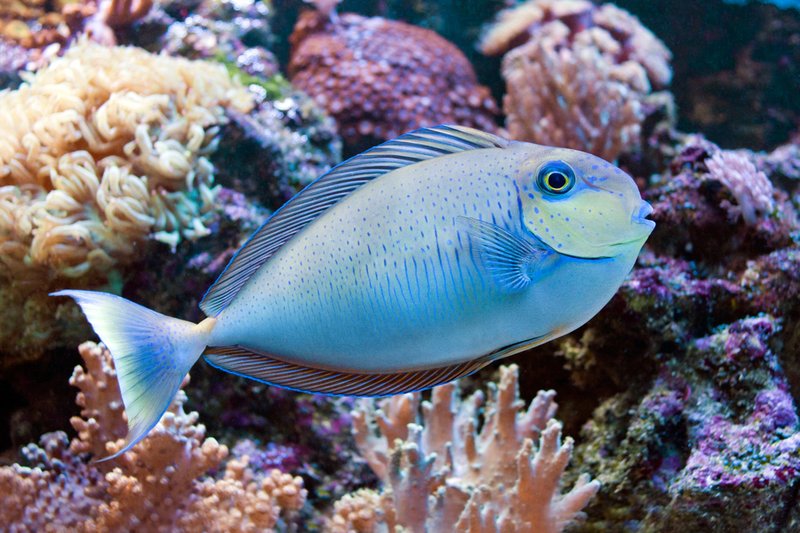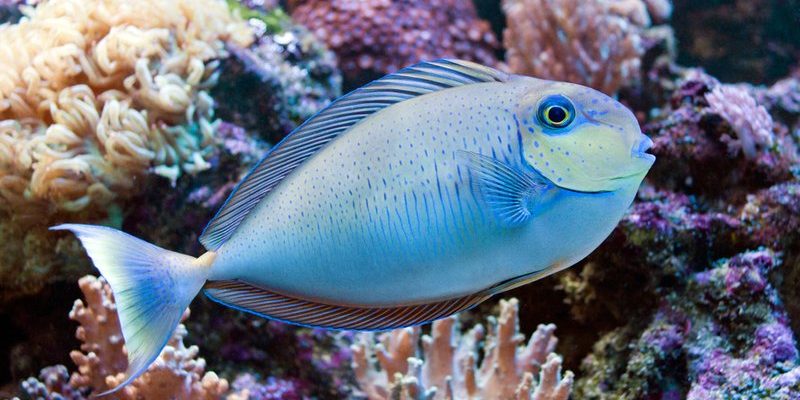
Let’s dive into the world of the Vlamingii Tang and explore what they eat, how they forage, and why their diet is essential not just for them, but for the entire reef ecosystem. You may be wondering what makes their feeding habits so unique, and that’s exactly what we’re here to uncover.
The Basics of a Vlamingii Tang’s Diet
First things first, understanding what the Vlamingii Tang eats is essential for any aquarium enthusiast or marine biologist. These fish are primarily herbivores. This means they thrive on a diet rich in plant material, specifically algae. Imagine a chef who specializes in vegetarian cuisine; the Vlamingii Tang is like that chef, expertly picking out the best greens from the ocean buffet.
Typically, their diet consists of:
- Green algae
- Red algae
- Brown algae
- Phytoplankton
What’s interesting is that the type of algae they prefer can change based on their environment and availability. You might find them munching on soft, leafy algae in a lush reef or scraping hard surfaces for more resilient algae. This adaptability is key to their survival in the wild, where food sources can vary significantly.
Foraging Behavior of the Vlamingii Tang
Now, how do these fish go about finding their food? Foraging is a big part of their daily routine. They are known for their swift movements and agility in the water, which helps them seek out their preferred meals. Think of them as small underwater lawnmowers, tirelessly trimming and grazing the reef.
Vlamingii Tangs often use their sharp teeth, which resemble a comb, to scrape algae off rocks and corals. This feeding technique isn’t just about eating; it also plays a vital role in maintaining the health of coral reefs by preventing algae overgrowth. In a way, they’re like nature’s gardeners, ensuring that the reefs remain vibrant and healthy.
Their social behavior also influences how they forage. Vlamingii Tangs are often seen swimming in small groups, which allows them to share information about food locations and defend against potential predators. Teamwork makes the dream work in the ocean world!
The Role of Environment in Their Diet
The environment plays a significant role in the Vlamingii Tang’s diet. These fish are typically found in shallow coral reefs of the Indo-Pacific, where abundant light encourages algae growth. Clear waters with plenty of sunlight create a thriving habitat for the algae they eat.
If you’ve ever been to a tropical beach, imagine looking down at the vibrant patches of green and brown swaying beneath the surface. That’s where the Vlamingii Tang finds its sustenance. The health of their habitat directly affects their feeding habits. If conditions are poor, such as pollution or climate change affecting coral reefs, these fish may struggle to find enough food.
It’s crucial for aquarists to replicate these conditions in home tanks by ensuring there’s a constant supply of algae or appropriate algae-based foods. Otherwise, the fish may become stressed or malnourished, leading to health problems down the road.
Feeding Vlamingii Tangs in Captivity
If you’re considering keeping a Vlamingii Tang in an aquarium, you might be wondering how to properly feed them. In captivity, it’s essential to provide a balanced diet that mimics their natural feeding habits as closely as possible. This means including high-quality algae in their diet.
Here are some tips for feeding your Vlamingii Tang:
- Provide a mix of frozen and dried algae sheets.
- Include high-fiber foods like spirulina or other seaweeds.
- Incorporate occasional vegetable-based flakes or pellets for variety.
Always live by the rule: quality over quantity. Overfeeding can lead to water quality issues and health problems for your fish. Monitor their eating habits and adjust portions as needed. It’s all about keeping your fish happy and healthy!
Common Feeding Mistakes to Avoid
Feeding any fish can come with its own set of challenges. For the Vlamingii Tang, some common mistakes can lead to health issues or stress. Here’s what to watch out for:
1. Neglecting Variety: Just like humans, fish can get bored of the same food. Make sure to switch things up and provide a range of dietary options.
2. Overfeeding: It’s tempting to think more is better, but too much food can lead to waste and poor water quality. Stick to small portions a few times a day.
3. Ignoring Water Quality: If your fish aren’t thriving, it might not be their diet causing the issue. Regularly check water parameters to ensure a safe environment.
By avoiding these mistakes, you can ensure that your Vlamingii Tang remains healthy and full of life.
Understanding the diet and feeding habits of the Vlamingii Tang is not just about knowing what they eat; it’s about appreciating their role in the ecosystem. These fish are not just beautiful; they contribute significantly to the health of coral reefs by controlling algae growth. Whether you’re mesmerized by their vibrant colors or fascinated by their foraging techniques, the Vlamingii Tang is a perfect example of how interconnected life in the ocean can be.
If you’re caring for one of these fish, remember to provide them with a balanced diet that mimics their natural grazing habits. By doing so, you’re not only ensuring their health but also nurturing the beauty of underwater life right in your home. So next time you see a Vlamingii Tang, think about the amazing journey their food takes from the ocean to their plate—and the vital role they play in our oceans.

